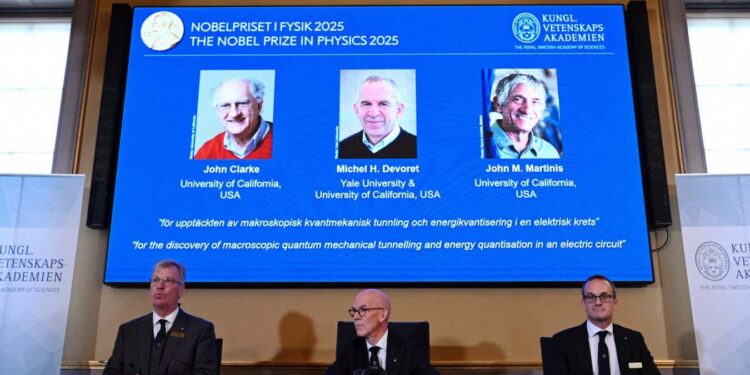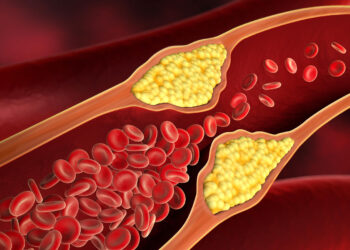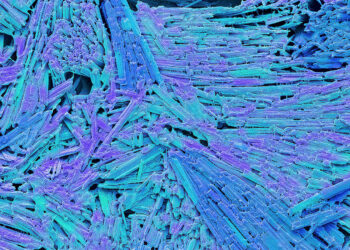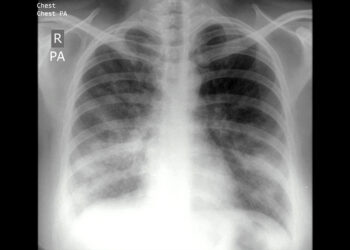
John Clarke, Michel Devoret and John Martinis share the 2025 Nobel prize in physics
JONATHAN NACKSTRAND/AFP via Getty Images
The 2025 Nobel prize in physics has been awarded to John Clarke, Michel Devoret and John Martinis for their work on showing how quantum particles can mysteriously tunnel through matter, a process that helped produce the superconducting quantum technology that forms the backbone of today’s quantum computers.
“I’m completely stunned,” Clarke told the Nobel committee upon hearing he had received the prize. “It had never occurred to me in any way that this might be the basis of a Nobel prize.”
Quantum particles have a variety of strange behaviours, such as their probabilistic nature and the fact that they can only have specific energy levels, rather than a continuum. This leads them to sometimes behave in unexpected ways, such as tunnelling through an apparently solid barrier. Such oddities was discovered by physicists like Erwin Schrodinger in the first decades after quantum mechanics began.
While these implications of these behaviours were clearly profound, underpinning for example the theory of nuclear decay, scientists could only observe them in single particles and simple systems. It was unclear whether more complex systems, such as electronic circuits, previously only described by classical physics, were also subject to these rules. Quantum tunnelling effects, for instance, seemed to disappear when looking at large-scale systems.
In 1985, Clarke, Martinis and Devoret, all based at the University of California at Berkeley, set out to change that. They measured the properties of charged particles moving through superconducting circuits called Josephson junctions, a device that won British physicist Brian Josephson the 1973 Nobel prize in Physics. These junctions use wires that have zero electrical resistance and are separated by an insulating material.
The researchers showed that particles moving through these junctions acted as a single particle and took on distinct energy levels, a distinctly quantum effect, and also registered a voltage that would be impossible without it having jumped over the insulating boundary, a clear example of quantum tunnelling.
This discovery, and its help in understanding how to manipulate superconducting quantum systems similar to this, revolutionised the field of quantum science, allowing other scientists to test precise quantum physics on silicon chips.
Superconducting quantum circuits also formed the basis for the basic building blocks of quantum computers, the quantum bit, or qubit. The most powerful quantum computers today, built by companies like Google and IBM, use machines made up of hundreds of superconducting qubits, which Clarke, Martinis and Devoret’s findings led to. “Our discovery, in some ways, is the basis of quantum computing,” Clarke said.
Martinis and Devoret now both work for Google Quantum AI, which produced the first superconducting quantum computer displaying quantum advantage over a classical machine, in 2019. But Clarke told the Nobel committee that it was not clear, at the time, how influential their 1985 research would go on to be. “It had not occurred to us in any way that this discovery would have such significant impact.”
Topics:
- Nobel prizes/
- quantum computing
Source link : https://www.newscientist.com/article/2499053-nobel-prize-for-physics-goes-to-trio-behind-quantum-computing-chips/?utm_campaign=RSS%7CNSNS&utm_source=NSNS&utm_medium=RSS&utm_content=home
Author :
Publish date : 2025-10-07 10:58:00
Copyright for syndicated content belongs to the linked Source.














